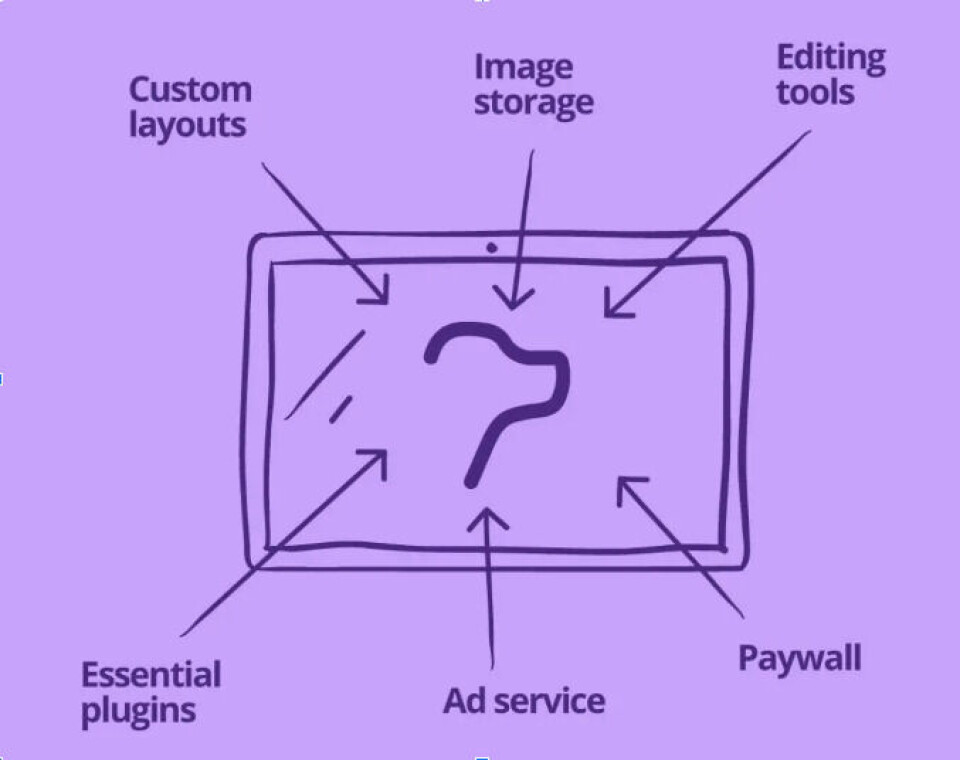
Best Digital Publishing Solutions to Try in 2025
Discover essential tools and strategies for effective online content management and audience engagement.
There is no denying that digital publishing has long surpassed traditional media such as print and broadcast. With each year, digital publishing takes up more space online. To cope with the demand, countless ways exist to publish content online for global audiences.
However, the modern content management system is built predominantly for commercial websites. What if you’re looking for a platform made for publishers only?
Luckily, there are plenty of great platforms for publishing and managing content for journalists. Today, we’ll show you what a great digital publishing solution should have and why these features matter.
What is a digital publishing solution?
A digital publishing solution is a content management system built for publishers, marketers, and designers in media houses, allowing them to create and manage content online.
Digital publishing solutions make it easy to publish content online, grow organic traffic, establish an online presence, and build a faithful audience.
Which features should a digital publishing solution have?
While each publisher may have their own needs and requirements, some features are necessary for an easy-to-use, modern, and functional digital publishing solution. We split them into ten categories to consider when evaluating your next content management system.
Content creation tools
Journalists, editors, and writers will personally add and edit content in the CMS. The user experience should be simple and easy to follow and not require stakeholders to know how to write or interpret code.
This is what you should look out for:
Intuitive WYSIWYG editors: what you see is what you get. This means that the input in the CMS should be the same as the output the reader sees when viewing the finished article.
Rich text formatting: the user should be able to style content without writing code. Bullet point lists, bold and italic texts, tables, etc., should all be done intuitively and visually without using code.
Multi-format content support (text, images, videos, infographics): the publishing solution should let users easily add and format various content types for easy viewing. From text to images, the user should be able to add content with a click.
Responsive design: the content you add in the CMS should adapt to the device the end-user uses. For example, the text layout will differ on mobile phones and desktop computers.

Mobile-friendly templates
The digital publishing solution should be fully mobile-ready. Given that over 60% of traffic on the web comes from mobile devices, the publishing solution should have several templates ready for mobile devices. In fact, some media experts say that the value is as high as 82% in favor of mobile. Along with that, you’ll need…
Adaptive layouts for different devices: the layout of the web page you’re working with should automatically adapt to the device being used to open it.
Collaboration and workflow management: multiple users should be able to work on the same page and make edits in the cloud, with changes being effective immediately.
For example, Labrador CMS allows you to simultaneously work on the mobile and desktop versions of the same piece of content. This allows you to have full control of how the mobile version looks from the very start. You can also start from the mobile version and adapt the desktop one instead.
In either case, you can choose the priority for you and your audience.
Version control
Sometimes, multiple authors work on the same piece of content. When this happens, it’s crucial to have different versions of the article saved so that when changes happen, you know who made them and when. These are the features you need:
User roles: differentiation between roles, e.g., administrator, editor, contributor, and others.
Search and Filtering
If hundreds of posts are published every month, it quickly becomes difficult for your readers to orient themselves. Search and filtering functions allow them to find what they want quickly.
Advanced search functionality with filters (date, category, author) allows the reader to search for keywords, authors, categories, tags, and more.
Tagging system for related stories and articles: the related posts to the one the reader is on show up under the same tag below the post they’re going through.
Metadata management
Metadata is a crucial aspect of SEO and allows you to influence your search engine rankings by making minor tweaks to the content that goes live on your website. Even non-technical users can manage metadata with an excellent digital publishing solution. Here are the features you should aim to get:
SEO-friendly URLs and schema markup support: the content management system should allow you to edit the URL and create a custom address to help you perform better in search engine results. For example, you could opt for /blog/best-automatic-watches instead of /blog/the-best-automatic-watches-for-2025. The ability to create a schema markup for your website is another feature that helps search engines such as Google understand how your website is structured.
SEO optimization: The digital publishing solution should have SEO features, either built-in or through plugins and extensions. These allow the author to optimize the content they are working on for a specific keyword.
Nice to have - Keyword analysis tools: these apps show you which keywords you used in your content, how many times and in which places (e.g. title, headings, meta description, image alt descriptions).
Real-time tracking of user engagement
For publishers, being able to track the impact of their content is crucial. A good digital publishing solution will let you do all that without taking a deep dive into complex analytics tools. These features should be on your radar:
Audience insights (demographics, behavior): at a glance, you should be able to see who is viewing your content and what kind of audience they belong to.
Conversion and performance metrics: allow you to see which of your content is driving conversions (paid signups, purchases, etc.) and how the content pieces stack against each other.
Monetization features: ideally, the CMS should have features for monetizing content in different ways, such as ad revenue, subscription models, sponsored content, etc.
Subscription models (paywall, freemium)
To make it easier to turn views and clicks into dollars, the digital publishing solution should have a set of subscription models for the viewer base. In this regard, you should be looking at a few key features, such as:
Ad management: the ability to run and manage paid ads directly on your website with integrations to third-party platforms.
Tagging and categorization for easy organization
Some publishers have hundreds of journalists covering different topics at any point in time. A tagging and categorization system lets you create a system for your team and your readers to easily find the content they’re looking for.
Journalists and editors usually find this process repetitive and tedious. Luckily, AI can solve this problem. For example, LabradorCMS generates tags automatically based on the article's content.
Media library for storing assets: a repository for all the content uploaded to the website, including images, videos and various other file formats.
Easy archiving and retrieval: the ability to easily archive and retrieve old content for new posts you’re about to publish.
Artificial intelligence features
AI is everywhere around us and built-in for most tools you encounter daily. A digital publishing solution can also have a range of artificial intelligence features for content creation and various other tasks. Look for features such as…
AI summaries: the ability to summarize a post and create a meta description, blurb, social media copy, alternative title and similar.
Creating new content: the ability to come up with new titles, sections and SEO metadata based on input
AI-based categorization: labeling, tagging and organizing content based on text analysis
Ability to publish in multiple languages
Having multiple versions of the same page in different languages is not only good for reach. It’s an excellent way to get your website to rank in multiple countries and continents, and the right CMS helps you do just that.
Look for AI-assisted content localization and translation: the ability to translate a page and publish it into multiple languages in a few clicks rather than doing tedious, manual translation.
Labrador CMS: the best digital publishing platform for news outlets and publishers
Unlike other digital publishing solutions, Labrador CMS was specifically built with publishers in mind. We know what it is like when you have limited developer resources and the need to publish large volumes of content on a daily basis.
This is what makes Labrador CMS the ideal digital publishing solution:
An intuitive, WYSIWIG editor
Mobile and web editor that lets you edit both versions of the page independently
Easy image editor that lets you pull from the web or your own media library
Effortless SEO metadata management thanks to AI creation of SEO titles and meta descriptions
Drag-and-drop visual editor
Responsive design that makes your website looks great on any device
Support for as many users as you want: we have customers with 500+ content creators
Version control and user roles
And much, much more
Ready to find out what Labrador CMS can do for your news website or magazine?

